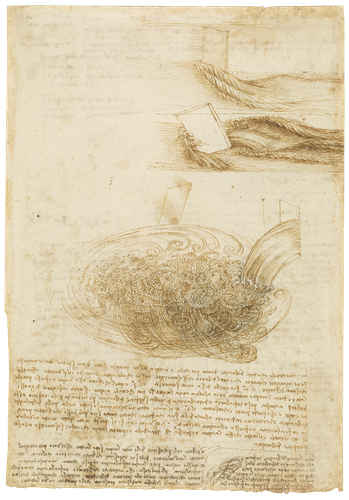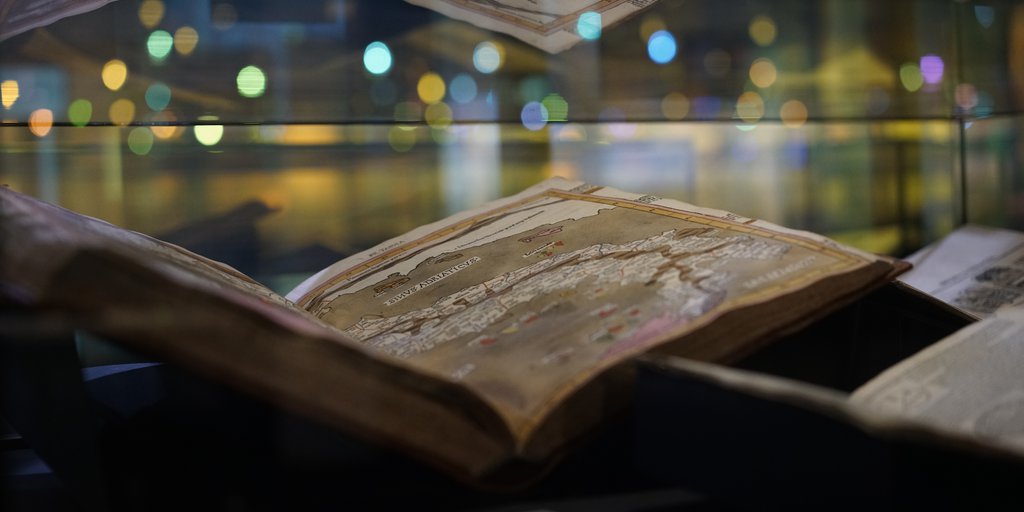
The World, Great and Small <
The ancients called man a world in miniature, and that is well-said, because indeed man is made of earth, water, air, and fire, and thus his body is like the Earth. Just as man has bones as a support and framework for his flesh,
so the world has stone to support the Earth …
Leonardo da Vinci
Paris MS A, fol. 55v. Translation: Amanda DeMarco
Visual arts, science, and technology were closely intertwined in 15th-century Italy. At the same time, the individual disciplines were part of the evolution of a more comprehensive worldview and the intensive exploration of the relationship between the macrocosm and the microcosm.
The worldview at large continued to rely on the geocentric tradition handed down from antiquity, with the Earth as the center of the universe surrounded by different hierarchically arranged spheres, from the sphere of water to the sphere of the fixed stars. The steady growth of knowledge, due not least to the geographical insights gained by voyages of discovery, increasingly called this view into question. In addition, intensified studies of nature in general and of the human body in particular, expanded knowledge of the world on the small scale.
It was hoped that this would lead not only to advances in science, medicine, and artistic representation, but also to a deeper understanding of the fundamental principles of life. The quest for such knowledge of nature was a central motif in Leonardo da Vinci’s creative work. The rapid development of printing continually increased the knowledge sources available to the artist-scientist, facilitating his search for an integrative worldview. At the same time, he was able to help shape this worldview through his own contributions: on a small scale through his analytical studies of the human body, and on a large scale through maps and depictions of astronomical phenomena.
Near and Distant Views <
 | 96.
Turbulence. Studies on the flow of water ca. 1510–1512 |

Among Leonardo’s most original scientific contributions were his minutely detailed observations on the movement of water, which were intended to comprise a large part of his planned treatise on the subject (Libro dell’acqua). His mastery of the medium of drawing enabled him to demonstrate the most complex dynamic processes and the mechanical forces at work here in the form of an ornamental diagram of lines of force. At the same time, it gave free rein to astonishing aesthetic qualities. The center of the sheet shows the vortex movements and the formation of bubbles that result from the stream of water constantly hitting the water surface. It also shows the effects of obstacles on the water flow in the form of wooden planks in different positions. At the bottom edge of the sheet, Leonardo made a later addition, as he often did: an observation on the flow of water around a ship’s bow.
References
Bambach, Carmen C. 2019. Leonardo da Vinci Rediscovered. Vol. 3: The Late Years 1506–1519. 4 vols. New Haven / London: Yale University Press, 278–280.
Clayton, Martin. 2019. Leonardo da Vinci. A Life in Drawing. 200 Works from the Royal Collection. Exhibition catalogue, The Queen’s Gallery, London, 24.5.–13.10.2019, The Queen’s Gallery, Palace of Holyroodhouse, Edinburgh, 22.11.2019–15.2.2020. London: Royal Collection Trust, 154, no. 115.
Heydenreich, Ludwig H. 1943. Leonardo. Berlin: Rembrandt-Verlag, 270–278.








